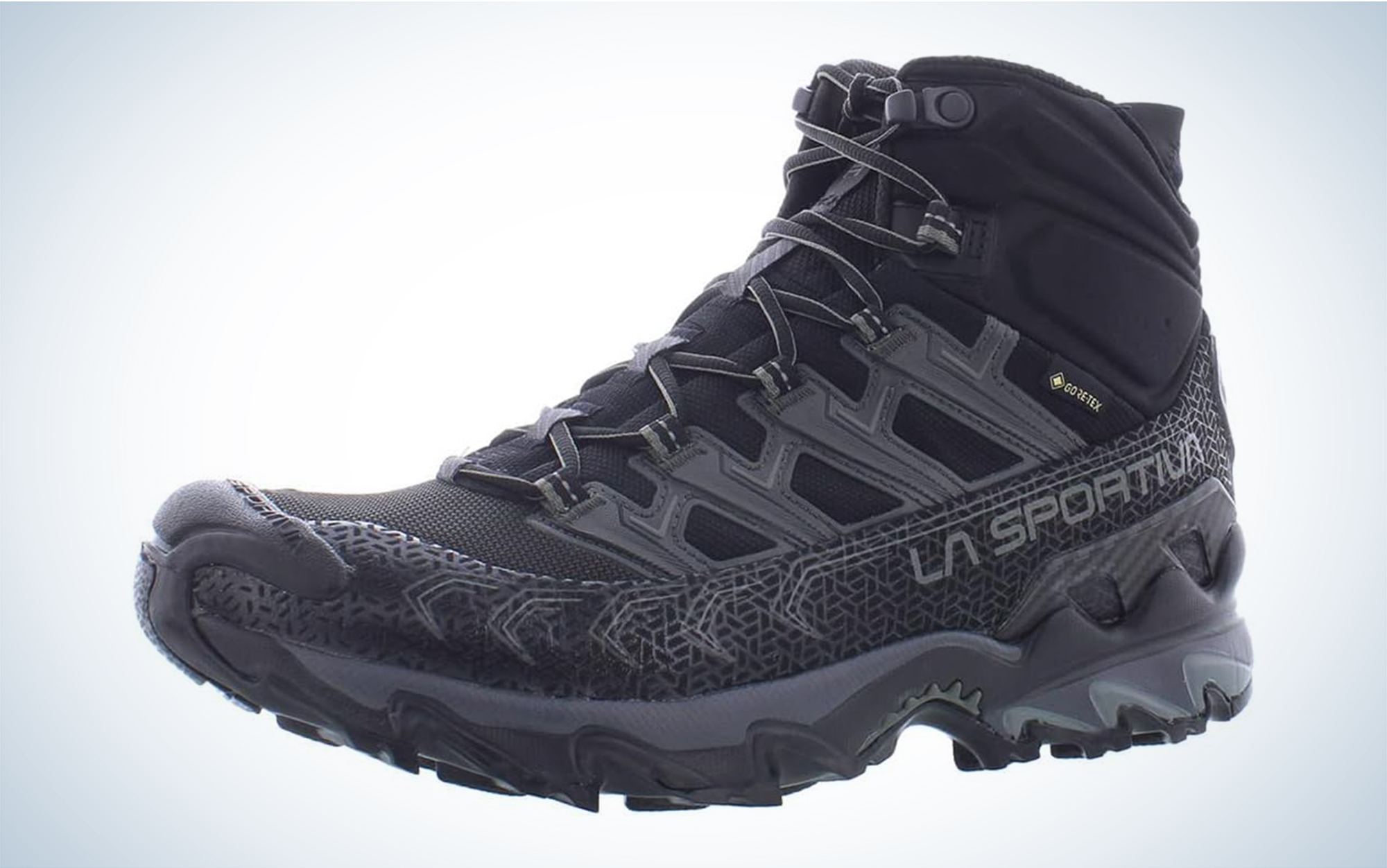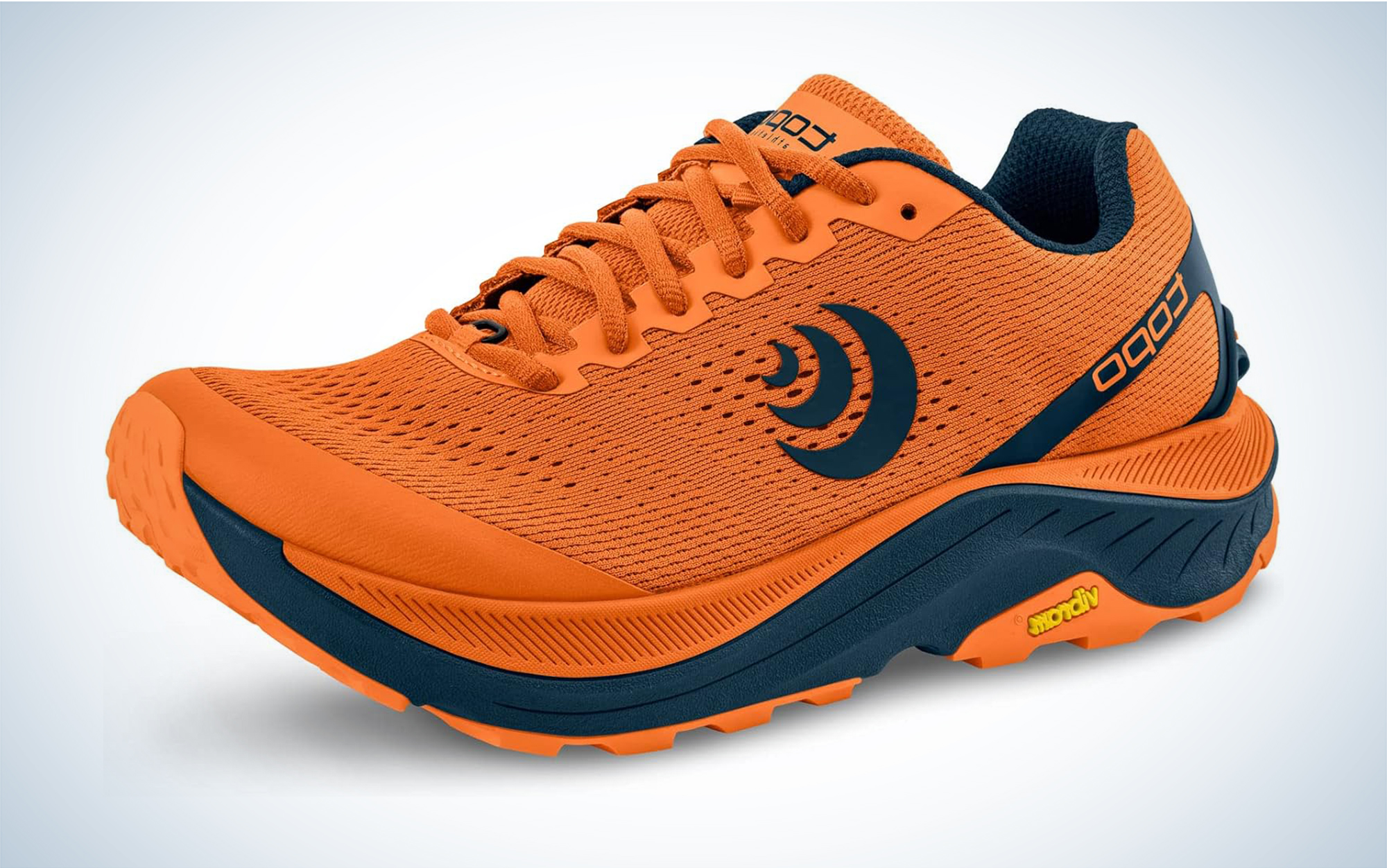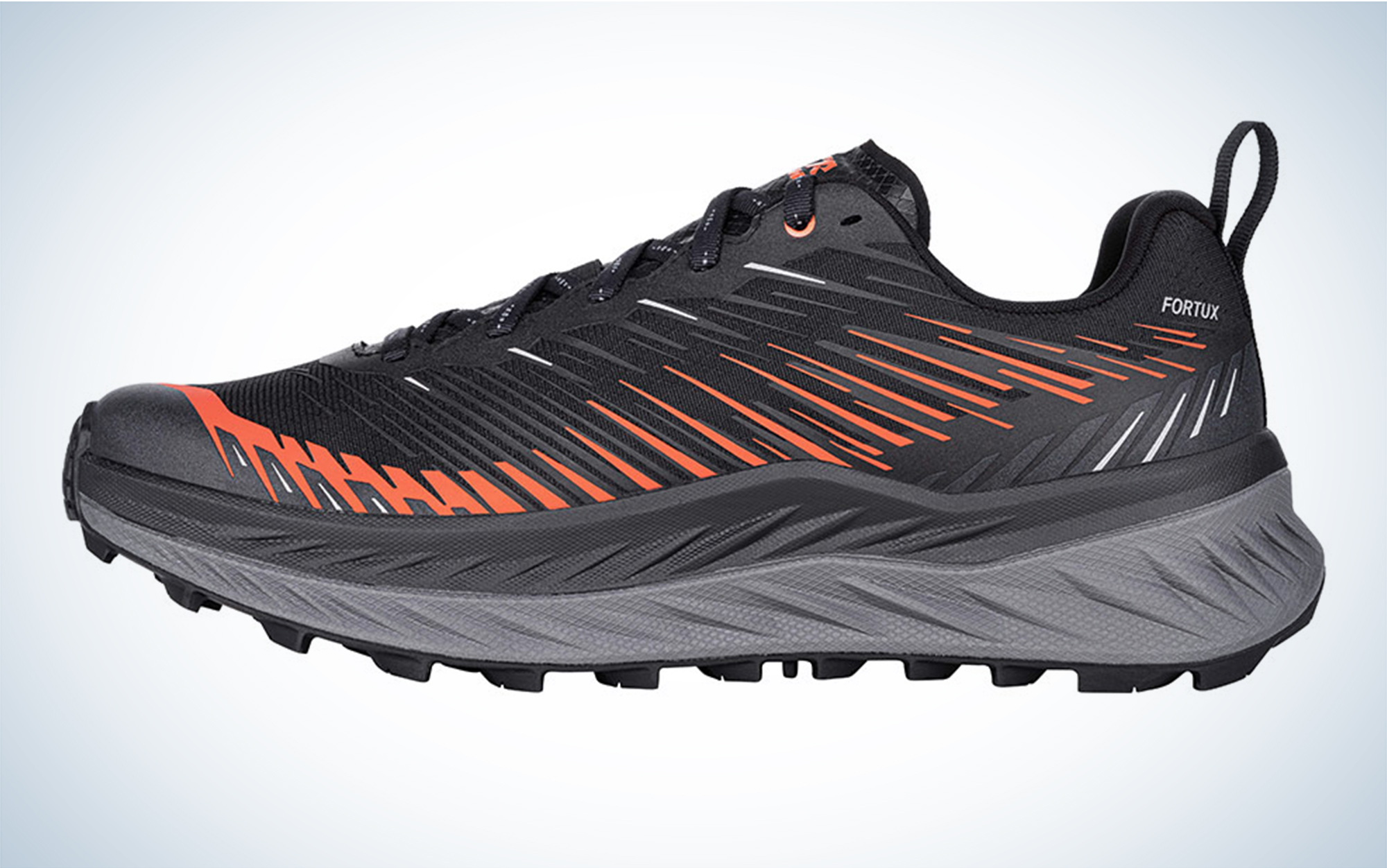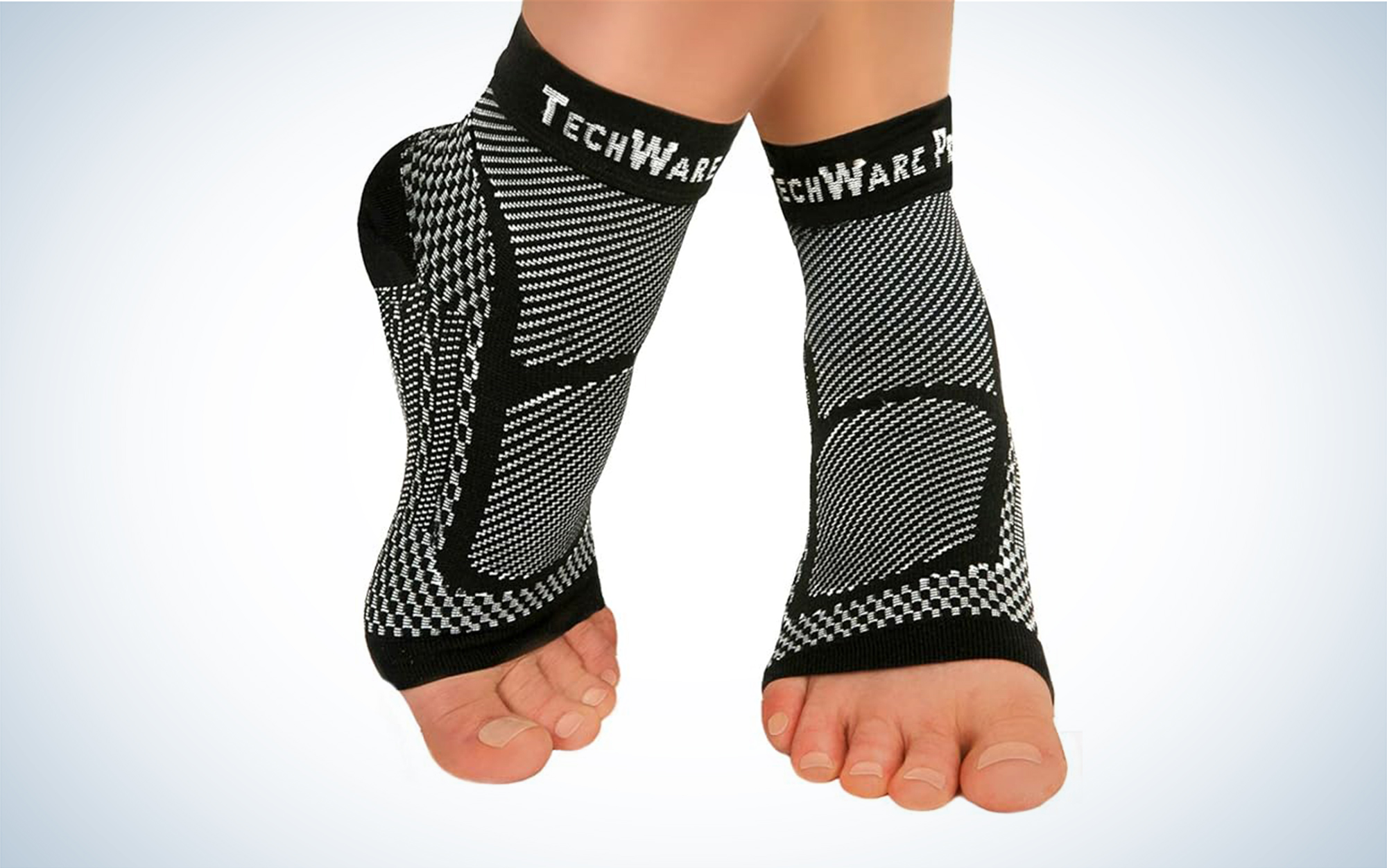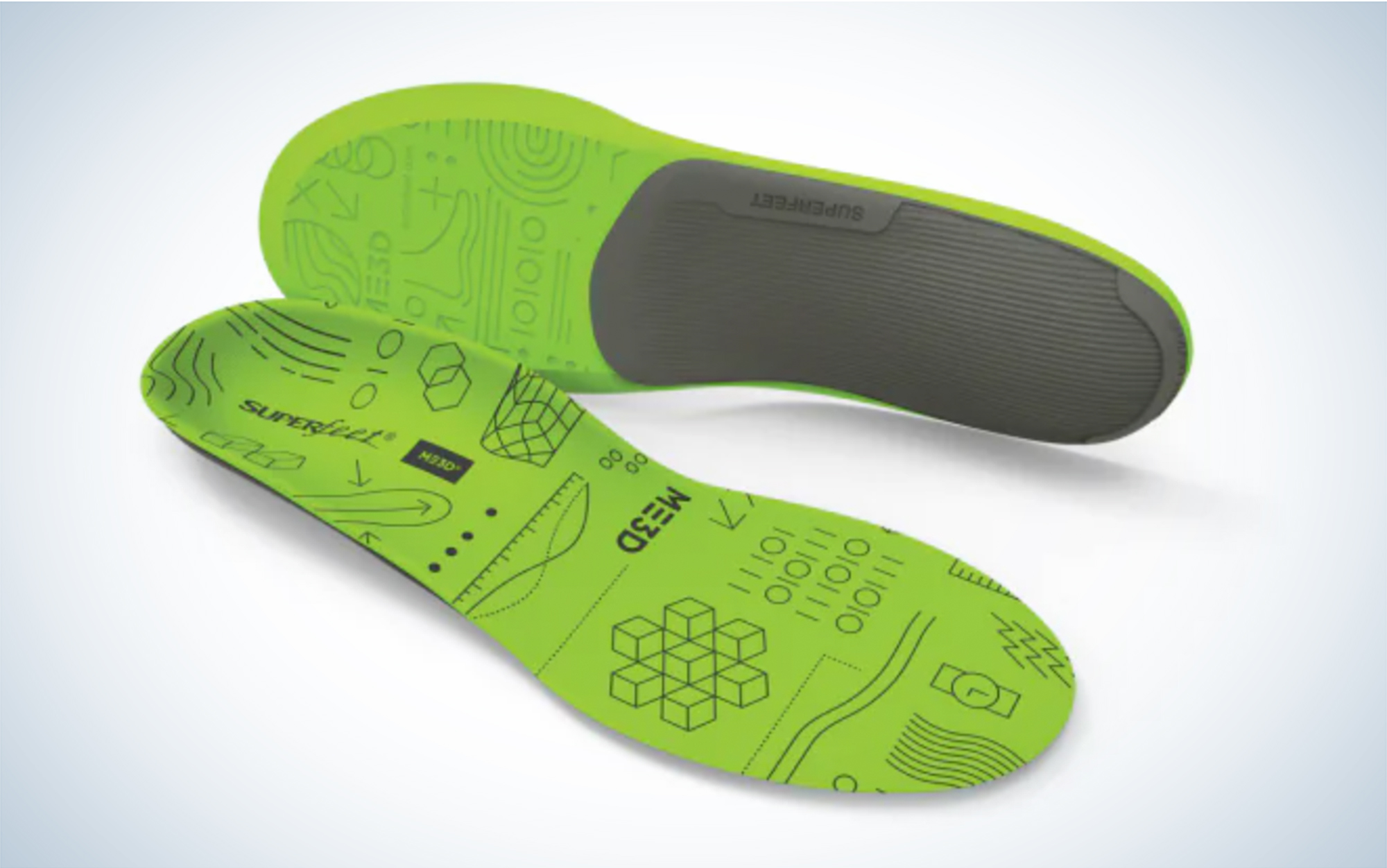The Best Hiking Boots for Plantar Fasciitis, Expert Recommendations
We may earn revenue from the products available on this page and participate in affiliate programs. Learn More ›
Best Overall
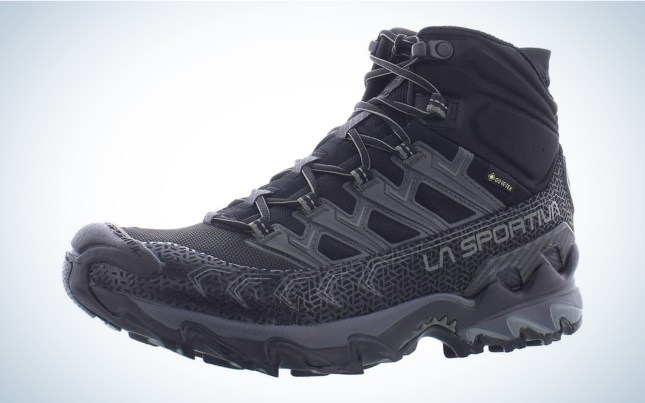
La Sportiva Ultra Raptor II Mid GTX Hiking Boot
Best Trail Runner
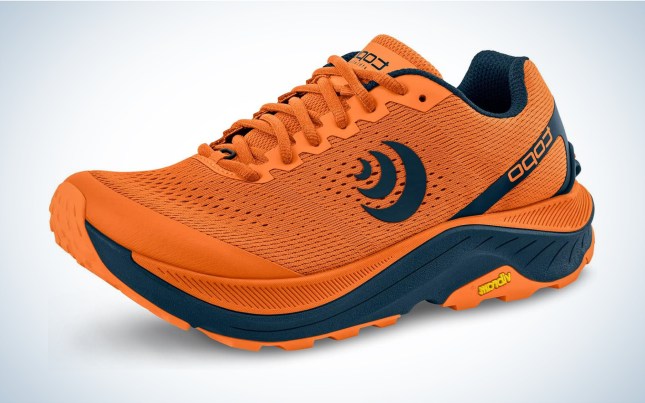
Topo Ultraventure 3
Best Maximalist
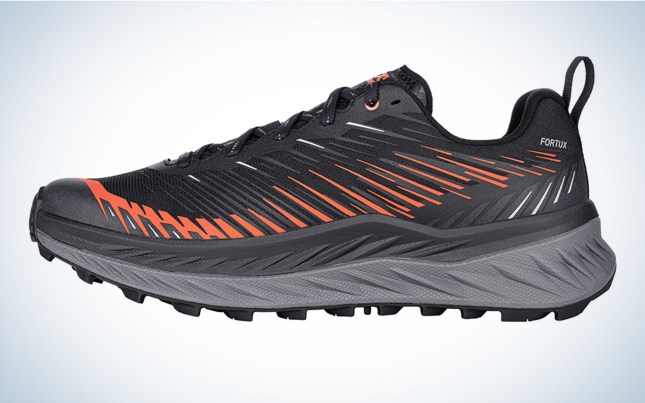
Lowa Fortux
If you’ve been struggling with foot pain, you might be wondering if hiking boots for plantar fasciitis can help. Hikers, backpackers, and runners, are all at risk for the most common musculoskeletal disease of the foot (and that goes double for thru-hikers). I spoke to a number of professionals, including a pedorthist and podiatrist, to learn more about how the right footwear can help improve plantar fasciitis over time. Here’s what they shared with me about the best hiking boots for plantar fasciitis to get you back in the backcountry.
- Best Overall: La Sportiva Ultra Raptor II Mid GTX Hiking Boot
- Best Trail Runner: Topo Ultraventure 3
- Best Maximalist: Lowa Fortux
- Best Compression Sleeve: TechWare Pro Ankle Brace
- Best Insole: Superfeet ME3D
What is Plantar Fasciitis?
Plantar fasciitis is a condition of the plantar fascia, the tissue that starts at your heel and fans out along the bottom of your foot to your toes. It helps support the arch of the foot and absorbs shock as it loosens and tights throughout your gait cycle. The plantar fascia is an integral part of your feet’s natural functioning, and can be affected by issues up and down the kinetic chain, including strained Achilles tendons, calf tightness, and limited mobility in your toes and ankles.
“Plantar fasciitis occurs when there is increased tension and resultant micro tears of the plantar fascia at its origin,” says podiatric surgeon Dr. Selina Sekulic. “There is a localized point of tenderness on a physical exam. Symptoms may include increased pain with the first few steps upon getting out of a lying or seated position.”
The reasons why an individual might develop plantar fasciitis are not fully understood, but it is more commonly seen in runners and individuals who are overweight — both instances where the plantar fascia would be expected to absorb more shock than the norm. So perhaps it is not surprising that hikers and backpackers also frequently suffer from plantar fasciitis due to the extra load they’re hauling.
If you believe you are suffering from plantar fasciitis, it is important to be evaluated by a podiatrist. They will be able to confirm the diagnosis (there are a few less common copycat syndromes out there) and best advise you on how to treat your condition, including stretches and strength training exercises.
How Can Hiking Boots Help with Plantar Fasciitis?
Jesse Angelini, a pedorthist who frequently advises PCT thru-hikers on footwear choices, told me that the best way to outfit individuals with plantar fasciitis is to give them a stable shoe and an insole that makes total contact with the foot. Hiking boots are designed to provide support across the span of the foot and lower leg. They provide a firm yet cushioned base for the foot, with plenty of arch support (so the plantar fascia doesn’t have as far to loosen and tighten).
Boots also cup the heel so that your foot doesn’t unnecessarily lift or stretch while you’re hiking, which also limits the possibility that you will roll your ankles. While the upper of most hiking boots isn’t going to prevent your ankle from rolling, the slight heel lift in most hiking boots helps alleviate any potential strain on your plantar fascia stemming from tight calves or a shortened Achilles tendon.
According to Angelini, it’s even more important to make sure you have the right insole for your hiking boot. “When you stand up and bear weight, your foot splays forward a little bit, and when you unweight it, it contracts a little bit,” he says. “And that’s normal. So with plantar fasciitis, what you’re trying to do is keep that from happening as much as possible until that plantar fascia can heal.” Putting in an insole that is making full contact across the bottom of your foot, which keeps it from moving as much, is the best way to achieve that. He also told me that a rocker sole can help to eliminate the motion of the foot.
Talking in person to a trained pedorthist, someone who is certified in using footwear to support and correct a variety of conditions that affect the feet, ankle, and lower leg, is a useful step in treating your plantar fasciitis. While they can’t diagnose your condition (you’ll need to talk to a podiatrist for that), they are true experts in how different brands and models of shoes and boots fit different feet.
Best Hiking Boots for Plantar Fasciitis: Reviews & Recommendations
If you’re looking to purchase hiking boots for plantar fasciitis, it’s important that you take the time to try on shoes in person, ideally with the assistance of a pedorthist, to ensure that the boot has the best fit possible. All shoes are designed differently, and there isn’t a great way to know which is the right fit for your foot shape other than through an in-person consultation with a pedorthist. If you are unable to access a shoe store, however, this list is a great starting point for making a purchase. If your situation is such that you need to make an online shoe purchase, look for an online retailer with a good return policy or a “try before you buy” program.
Best Overall: La Sportiva Ultra Raptor II Mid GTX Hiking Boot
Key Features
- Available Sizes: Men’s 6-15.5, women’s 7-16.5
- Available in wide
- Heel Drop: 12mm
Pros
- Great stability
- Trail-ready lugs
- Waterproof
- Wide range of sizes
Cons
- Runs narrow
- Expensive
When helping Pacific Crest Trail thru-hikers get back on the trail after their footwear resulted in a musculoskeletal injury, this was Angelini’s most common recommendation. “This is a great shoe because it has a nice stable heel counter, it’s torsionally rigid, and the shoe’s not going to try to move excessively,” he says. “It’s a very responsive shoe.” He also recommends starting with the wide version of this shoe, as it often runs narrow.
Best Trail Runner: Topo Ultraventure 3
Key Features
- Available Sizes: Men’s 7-15, women’s 6-11
- Available in wide
- Heel Drop: 5mm
Pros
- Wide toe box
- Gaiter compatible
- More affordable than other picks on this list
Cons
- No boot version available
If you’re looking for something more minimalistic that still provides the necessary cushion, support, and stabilization for active plantar fasciitis recovery, Angelini recommends the Topo Ultraventure 3. It’s lighter weight than the La Sportiva Ultra Raptor and has a wider toe box, which individuals may find more comfortable.
Best Maximalist: Lowa Fortux
Key Features
- Available Sizes: Men’s 7.5-14, women’s 5-10.5
- Not available in wide
- Heel Drop: 6mm
Pros
- Thick, long-lasting foam
- Rocker bottom helps to alleviate some pressure on the plantar fascia
Cons
- No wide available
If you’re looking for a supportive hiker the Lowa Fortux is a good option to try. “[The Fortux is] kind of like a Hoka but with a denser foam, so it doesn’t break down as quickly,” Angelini says. That’s great news for individuals looking for reliable support for many miles. Like the other picks on this list he described it as having a “nice heel counter” and being “torsionally rigid.”
Best Compression Sleeve: TechWare Pro Ankle Brace
Key Features
- Available Sizes: Men’s 3-13, women’s 4-11
- No wide width available
- Material: Nylon, spandex
Pros
- Can be worn with your current shoes
- Very affordable
Cons
- Works better for some foot shapes than for others
If you don’t have the time to break in a new hiking shoe or boot before heading out on a big adventure, you can still do something for your plantar fasciitis. 4Points Expedition Guide Christy Verrelle Williamson told me she points clients toward the Techware Pro ankle brace compression sleeve, which uses compression to help support the foot arch and relieve pressure on the plantar fascia.
Best Insole: Superfeet ME3D
Key Features
- Available Sizes: Men’s 5.5-13, women’s 4.5-14
- No wide available
- Available with slim or maximum cushion
Pros
- Affordably priced
- More likely to fit your foot than other insoles tested
Cons
- For some individuals it may produce an unpleasant odor
To find your own Superfeet’s ME3D insole, you’ll need to find a Superfeet retailer to analyze your feet’s biometrics. Then, they’ll order you a custom 3D-printed pair. In her test of the best insoles for hiking, OL assistant editor Ashley Thess was impressed by the level of detail and customization available from your foot scan. This makes the ME3D more versatile for a wider range of people than an off-the-shelf option which may not fit your particular foot. The wrong insole can even aggravate the issue.
Why do you need an insole? “The shoe is the foundation of your house, but the insole is going to be the shim to keep everything plumb level and flush. You need both,” Angelin says.
Things to Consider Before Buying Hiking Boots for Plantar Fasciitis
The Importance of Seeing a Podiatrist
It’s fairly common for individuals to self-diagnose plantar fasciitis. And while they are often correct, there are other musculoskeletal issues that can mimic the condition, including bone spurs on the heel. Sekulic shared that “X-rays are always recommended to evaluate for possible boney pathology. Cystic changes in bone, as well as stress fractures can mimic plantar fascia pain. Ultrasound is used to evaluate the soft tissues surrounding the heel, including pathological changes of the plantar fascia itself.”
Treatment
There are a number of available treatments for plantar fasciitis. Sekulic shared her approach to her clients with me: “We take a top down approach when treating this condition. Oftentimes the calf and hamstring are the culprits leading to biomechanical asymmetry and subsequent strain on less resilient structures of the foot (i.e. the plantar fascia). Additionally, weak glutes can lead to gait disturbances. Rather than just treating the symptom, (i.e heel pain) we address all lower extremity weaknesses that could potentially lead to faulty biomechanics.”
While the right footwear can help prevent reinjury of the plantar fascia as it’s healing, there are active treatments that podiatrists use, including stretching. For more intractable cases, Sekulic told me that she uses shockwave therapy and corticosteroid injections.
Sekulic also stressed the importance of not overdoing the insoles. “Orthotics can aid in the healing process. Orthotics serve as a bridge to decrease tension of the plantar fascia, as it heals,” she says. “Nevertheless, I don’t recommend long-term daily use of custom orthotics unless there is a structural deformity of the foot or ankle. Rather, strengthening and stretching exercises are encouraged.”
Dr. Irene Davis, a professor of physical therapy, also shared with me the importance of moving onto a regime of stretching and strengthening after the initial injury subsides. She views individuals who continue to use supportive insoles and shoes with high stack heights and heel drops as akin to an individual with a neck injury continuing to wear a neck brace after it has healed. “It’s like any other musculoskeletal injury,” she says. “You have to let it heal. You have to strengthen the muscle. And then you have to gradually start to use it.”
Planned Load
Hikers and backpackers can get into trouble with plantar fasciitis because they are often adding more miles and more weight than they’re accustomed to in their daily life. Keep in mind how heavy a load you are carrying into the backcountry if you are dealing with plantar fasciitis. Switching to a more lightweight setup, including the best ultralight tents and the best ultralight backpacks can be a smart move.
FAQs
While the exact cause of plantar fasciitis is not fully understood, it is heavily correlated with higher impact foot strikes: think running, overweight individuals, and hiking and backpacking. It is also correlated with sudden jumps in activity, making it one of the most common overuse injuries that can occur to the foot.
Hiking boots can provide significant support and cushion, which is sometimes helpful for individuals with plantar fasciitis. It’s also important to talk with your doctor about whether one of the best insoles for hiking could help support your foot while the plantar fascia recovers.
According to Angelini, rocker bottoms can “take pressure off the foot and the ankle, so the shoe is moving in a way that your foot doesn’t have to.”
According to Angelini, “for plantar fasciitis, you want to keep the arch from splaying. You want total contact with the bottom of the foot.” That means that, for individuals with active plantar fasciitis symptoms, regular use of barefoot shoes is discouraged. But the relationship between plantar fasciitis and barefoot footwear is more complicated.
Studies have shown that shoes with less cushion and smaller heel drops are associated with the development of plantar fasciitis. However, individuals in the barefoot community have frequently countered that it is the increased cushion and high heel drops of modern footwear that has contributed to the weakening of the foot and poor form when running or walking. There are studies that have shown individuals in countries where barefoot or uncushioned footwear is the norm do not experience anywhere near the level of plantar fasciitis as those in western countries experience.
However, this is not directly applicable to individuals currently dealing with plantar fasciitis, as individuals who have been unshod their entire life will have stronger foot musculature than those that are looking to build that strength later in life. A more applicable study looked at whether running barefoot on grass could be a treatment for runners (living in Ireland) experiencing plantar fasciitis, with positive results. However, given the limited understanding of the causes of plantar fasciitis and the difficulty in finding a universal treatment method makes it hard to state that running or walking barefoot is better for individuals with plantar fasciitis. With everything to do with overuse injuries, it’s essential to listen to both your body and your doctor when determining what course of action to take.
Read Next: Best Hiking Shoes for Beginners
Final Thoughts on the Best Hiking Boots for Plantar Fasciitis
Plantar fasciitis is one of the most common overuse injuries among hikers and backpackers, and getting the right hiking boots for plantar fasciitis is an important first step. While some individuals are able to overcome their plantar fasciitis quickly, others can suffer from this condition for years or even decades. Remember that proper footwear is just one part of the equation. Speak to your podiatrist about exercises and stretches that can help to improve your plantar fascia and remember to take it slow: If your body tells you that a particular activity or shoe or insole is helping or hurting the situation, listen to it.
- Best Overall: La Sportiva Ultra Raptor II Mid GTX Hiking Boot
- Best Trail Runner: Topo Ultraventure 3
- Best Maximalist: Lowa Fortux
- Best Compression Sleeve: TechWare Pro Ankle Brace
- Best Insole: Superfeet ME3D
The post The Best Hiking Boots for Plantar Fasciitis, Expert Recommendations appeared first on Outdoor Life.
Source: https://www.outdoorlife.com/gear/best-hiking-boots-for-plantar-fasciitis/
